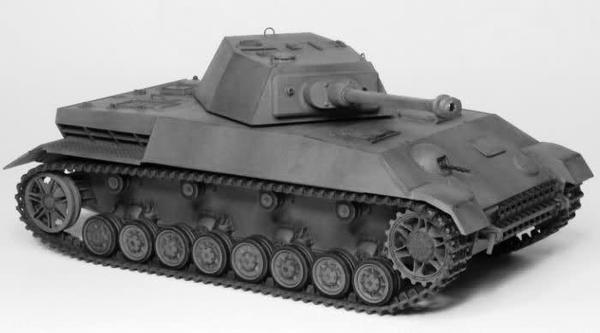While I agree with both of you on how some production uniformity on the Panzer IV could only help, I think the more interesting alternative would be what if they took the same thinking an ended up at the wrong result. So what if they misguidedly settle on standardizing the Panzer III instead?
With hindsight we can see it as the inferior tank, but points in favor of which compared to the IV at the time: The III was cheaper and easier to produce than the IV, as seen in production numbers. Even more so with the intended simplification and standardization effect. The Panzer III was the planned anti-tank design, and had the capacity to mount 50mm and the 75mm L/24 for HE shells anyways, all of which was seen as perfectly sufficient at the time. And if that wasn't sufficient for the infantry support role the III also shared chassis with the Stug (the concept of which had already been envisioned by Manstein). If you have the Panzer III in the anti-tank role (with upgunning giving it HE capabilities as well) and the Stug in the fire support role, and can produce them in larger quantities, it makes the Panzer IV seem somewhat superfluous.
And then things are going to get bad. In Russia the L/60 can somewhat defeat the T-34 on even footing (which is bad, Germany can't afford to fight fairly), but the KV series will be practically invincible, and Germany will lack an effective long barreled tank until 1943 when the Panther is produced (as a limited production unit, the Tiger doesn't really come with enough quantity to make a difference).
Even then they're still shackled with the majority of their panzer forces being ineffective Panzer III's once the T-34/85 and M4 begin being used by the allies. That worked out pretty well with the left over Panzer IV's during the end of the war, but the Panzer III is probably deadweight unless someone can get really creative with it. A much earlier PAW 600 could probably fit in a Panzer II (though I find it a bit of a stretch when people claim it could somehow fit in a Pz38, it seems to have a similar profile and size to the L/60) and bring penetration up to combat standard, but has pretty much no range. The 20-ton Panther/VK20 could also be ready for production by the end of 1941/early 1942. That gives them a tank that can bring a 75mm L/43 onto the field, but has effectively no armor at all (at least it's mechanically reliable). If we accept the PAW divergence it could also mount the PAW 1000 though, in addition to giving the Heer a cheap AT gun. Desperation might force Germany to do such anyways until the 30-ton or 40-ton Panther design could be finalized. The Tiger might be a net loss in this scenario but I suppose the demand for it is going to be unavoidable anyways.
In the meantime, Germany is going to be churning out assault guns, tank destroyers and AT guns as a stopgap measure, in much greater numbers than OTL. An earlier movement to war economy footing would also help in that regard. That's going to more or less lock Germany into defensive warfare. Assault guns and panzerjagers (the majority of armored combat vehicles by 1943 probably) aren't really suited for defending against the Soviet style of operational warfare or for offensives or firebrigades. They'll be hell on the Western Front at a tactical level though (assuming the Western Front still happens). There might also be some production of Centauro-esque vehicles like the SdKfz 234 and Pz.Sfl.II in an attempt to restore some mobility to the Heer and under the principle of getting as many 75mm guns as possible out once the III is shown to be woefully deficient.
By that point pre-war tactics have been shattered by necessity, so you might see the role reversal of Germany attempting to fight a numbers game of cheap to produce vehicles that are not particularly exceptional in armor or armament but merely adequate, fighting against a Red Army choosing to use heavier more slower higher-quality production vehicles like the KV and IS series (the Red Army may have decided to focus on heavy tanks after observing the artificially inflated performance disparity between the Panzer III, T-34, and KV-1 during the early Barbarossa campaign).
In short I present to you, a total clusterfuck. I'll say it looks to lean towards a Germany-screw at first, though the right developments and decisions (and luck) might still allow the war to end somewhere around 1945, especially if the constraints and limitations of the Panzer III force Germany to make some rational 'evolve or die' decisions so to speak.

